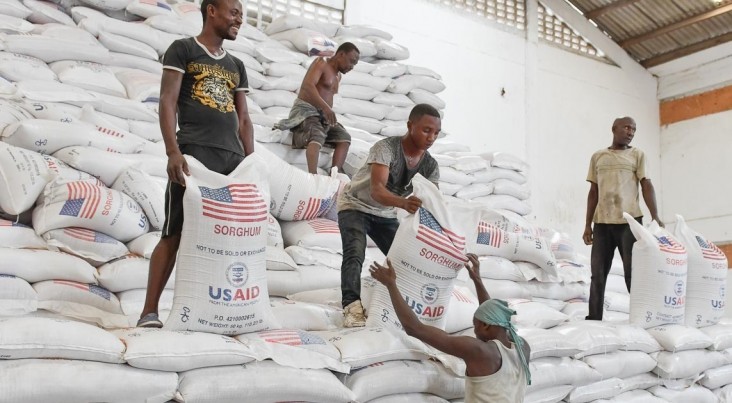Press Release Shim
Speeches Shim

For Immediate Release
The United States government, through the United States Agency for International Development (USAID)’s Office of Food for Peace (FFP) announces the arrival of 18,300 metric tons of food assistance at the Mombasa port. The bulk shipment, which will be distributed through the World Food Program (WFP), arrived at port this week and is valued at approximately KES 340 million ($3.4 million). The assistance is part of the larger U.S. government support to Kenya for food security relief and long-term resilience building among vulnerable Kenyans which in 2019 totaled almost KES 10.2 billion ($102 million).
The food, grown by American farmers and the relief program supported through American taxpayer money, reflect the United States’ strong commitment to the health and food security of the Kenyan people.
“The United States is committed to addressing the needs of Kenyans suffering as a result of devastating drought and severe food insecurity in the northern and eastern regions of the country. USA Marafiki will continue these and other efforts to build resilience in Kenya to best support our Kenyan friends on their path to self-reliance.” Ambassador McCarter said.
Through support from the U.S. government, WFP has targeted over 390,000 beneficiaries to receive assistance in nine arid counties: Turkana, Baringo, Marsabit, Isiolo, Samburu, Mandera, Wajir, Garissa, and Tana River. In partnership with USAID, WFP will also provide food or cash transfers to meet seasonal food gaps and capacity strengthening in the building of irrigation canals, increasing fodder production, and creation of water pans to increase food production and diversify livelihoods.

Comment
Make a general inquiry or suggest an improvement.